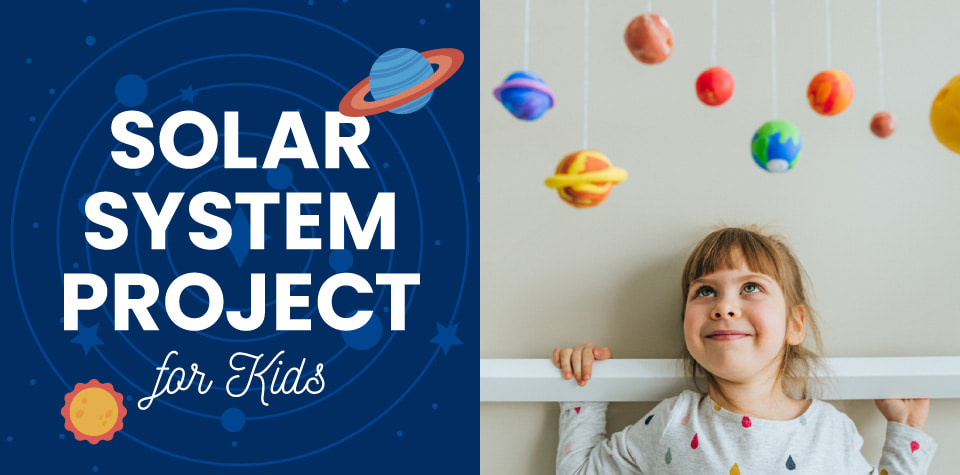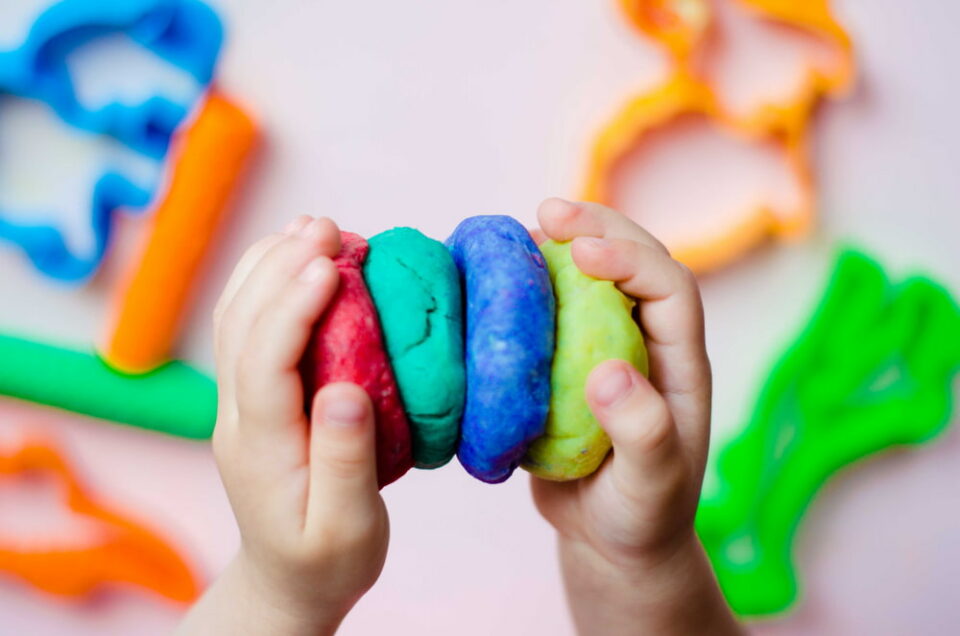
A Solar System Project for Kids That’s Out of This World
For many children, the first step toward space exploration is learning we live on a planet called Earth. Next comes the discovery that Earth circles the Sun within a solar system it shares with seven other planets and many moons. Once the wonders of space hook them, they’ll spend hours devouring books and videos on the subject. But how else can you feed their curiosity?
A solar system project for kids made using simple arts and crafts supplies is the perfect means to bring space to life. Solar system projects for kids are a great way to take what they’ve discovered about the cosmos and turn it into something concrete they create with their own hands. By building a solar system model, your child visualizes how the planets move in relation to each other, the Sun, and the expanse of space. This fun activity will kickstart your space adventurer’s imagination and creativity while stimulating their curiosity to go out and discover more.
Let Creativity Soar
There are so many easy solar system projects available for kids, no matter their age. Younger space explorers can build a solar system project in a box with pom-poms or create a poster of the planets using printable coloring pages, pencils or crayons, markers, and glue. Older rocketeers will enjoy more complex activities like building a 3D model of the solar system’s planets orbiting the Sun using styrofoam spheres and skewers.
Not sure where to start? Here’s a simple solar system project idea that uses play dough to create the planets and the Sun. Children can complete it mostly by themselves but will need a little help from you when it’s time to measure out distances between each celestial object.

Materials
- Black poster board
- Chalk
- Ruler
- Store-bought or homemade play dough in various planetary colors (gray for Mercury, blue for Earth, red for Mars, yellow for the Sun, etc.)
- Silver permanent marker
- Glue (optional)
- Coloring pencils or paint (optional)
- Construction paper (optional)
- Safety scissors (optional)
- Little Passports Solar System Facts (optional)
Method
- Using different colors of play dough, have your child create a set of nine spheres (one Sun, eight planets). Size the spheres according to what we know about planetary size. For example, the Sun would be the biggest sphere, Earth would be twice the size of Mars, and so on. Older crafters can create additional spheres for the Moon and the dwarf planet Pluto. Refer to the Little Passports Solar System facts table if you need to.
- Ask your child to flatten the spheres into disks. Keep a uniform thickness to maintain the planets’ relative sizes.
- Using the chalk and ruler, help your child mark the center of the poster board. Place the Sun in this location.
- Next, begin placing the different planets in order around the Sun, starting with Mercury. For younger kids, just putting the planets in order is a satisfying challenge. Older kids can determine the placement of the planets from the Sun based on solar system units. For example, Mars is one and a half times farther away from the Sun than Earth. Use these 33 facts about our solar system as a guide.
- Draw a circle to represent each planet’s orbit around the Sun, sketching it lightly at first with chalk. Once you’re happy with the result, trace each orbital line using the silver marker and label it with the corresponding planet’s name. Older kids can draw the orbits themselves, while younger kids may be happier tracing the lines once they’ve drawn them.
- Encourage your child to decorate their project by drawing other solar system elements like stars, comets, asteroids, NASA spacecraft, and the International Space Station. They can also create rings for Saturn, Jupiter, Uranus, and Neptune using construction paper and safety scissors.
- If your child wants to hang this solar system project on their wall, help them glue the planetary disks directly onto the poster board.
You can adjust this activity into a hanging mobile for older learners by switching out play dough for quick-drying clay. Once you complete the spheres, leave them to dry thoroughly instead of flattening them. While the clay is setting, help your crafter straighten out a wire coat hanger. Keep the hook end intact while bending and reshaping the rest of its length into a flat spiral (think cinnamon rolls but with space in between the coils). Cut different lengths of fishing lines for each planet and the Sun. Hang the Sun from the center, followed by the planets (in order), to create a fun 3D solar system mobile.
Lift Off to Knowledge
Now that your space explorer has enjoyed making their own solar system, it’s time to head deeper into the galaxy. Set them on the path to their next space adventure with some fascinating facts about our solar system and beyond.

- Heavyweight. If you could put the Sun on a scale, you would discover that it weighs 4.384 × 1030 pounds. That’s 99.8 percent of the total weight of the solar system. Talk about a space hog!
- No pressure. Because space is a near-perfect vacuum, anything exposed to it wants to expand, including the air in your lungs. You could survive without a spacesuit for about 15 seconds before you’d run out of breathable oxygen.
- That’s a lot of zeros. So how many stars are there in the sky? Astronomers’ best estimate is that there are one septillion stars in the universe. That’s the number 1 followed by 24 zeros. Could you imagine doing a roll call?
- A city in space. The International Space Station orbiting Earth is 357 feet long (109 meters), which is almost the same size as a football field and weighs a hefty 925,000 pounds (420,000 kilograms). It’s the largest space structure humans have ever created. So far, 230 people from 18 different countries have made the ISS their temporary home.
- Space laws. It might surprise you that there are laws governing human activities in space. The United Nations Office for Outer Space Affairs is responsible for writing and enforcing these laws. For the most part, they’re pretty easy to follow and help ensure space exploration is for peaceful means only.
Engage Curiosity in 3-2-1
Teaming up with your child for interactive crafts like this DIY solar system helps further their curiosity and deepen their passion for exploring the world around them (and beyond!). There’s no need to wait for the next school science project to get started. If they love space exploration, maybe the next step is building a model spacecraft, developing experiments to test their hypotheses about space, or using facts about space to spice up pretend play with science. By joining in the fun with hands-on activities, you’ll help fuel a lifelong love for learning while creating countless opportunities to connect.
If your child enjoyed building this DIY solar system, they’ll love crafting an astronaut to go with them on future missions to the Moon. Once they return from their lunar journey, they could explore the deepest reaches of space to find the coldest place in the universe or discover why planets are round. Or help take your young astronaut’s explorations further with our Science Expeditions subscription box. Each box delivers fun experiments, new inventions, and hands-on activities your child will love. You could shop our other STEM kits and products too. Whatever comes next, it’s sure to be an adventure.
